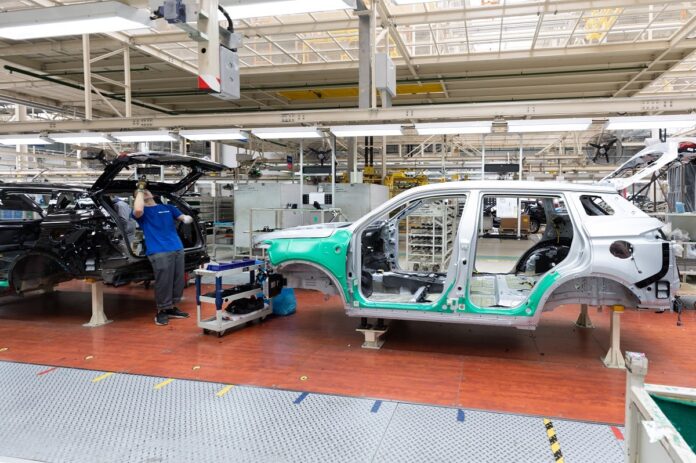Automotive engineering is concerned with the design and operation of ground vehicles, and their engineering systems. An automotive engineer would find themself designing automotive products and vehicles, e.g., cars, buses and trucks. In automotive engineering, you could find yourself specializing in things such as structural design, exhaust systems or engines. Some examples of an automotive engineer’s job include:
• Building prototypes of automotive components and testing their performance.
• Solve automotive engineering problems using mechanical, electrical, hydraulic and thermodynamic principles.
• Decide on the most appropriate materials for component production.
Table of Contents
Historical Evolution
The historical evolution of the automotive industry is a captivating narrative that reflects the ingenuity of human minds, societal changes, and technological leaps. From the invention of the first horseless carriages to the rapid advancements of the 21st century, the industry’s journey has been marked by innovation, challenges, and transformative breakthroughs.
Birth of Mass Production:
The early 20th century witnessed a watershed moment in the automotive industry with the introduction of mass production techniques. Henry Ford’s implementation of the assembly line in the production of the Model T Ford revolutionized manufacturing processes. This innovation drastically reduced production time and costs, making automobiles more affordable and accessible to the general public. The era of mass production not only transformed transportation but also had a profound impact on industrial practices across various sectors.
Era of Design and Cultural Influence:
As the automotive industry matured, design became an essential factor in attracting consumers. The 1950s and 1960s saw the rise of iconic designs, such as the sleek and stylish “muscle cars” that captured the spirit of American youth culture. Car manufacturers embraced innovation in aesthetics, incorporating new materials and aerodynamic principles to create visually appealing and efficient vehicles.
From the first experimental vehicles to the current quest for autonomous mobility, the industry’s journey has been marked by milestones that shaped societies and transformed economies. As the industry continues to evolve, embracing sustainable practices and cutting-edge technology, the road ahead promises an exciting fusion of tradition and innovation, propelling us into an era of transportation that was once only imaginable in science fiction.
Components of the Automotive Industry
The automotive industry is made up of numerous interrelated parts that work together to create the vehicles we depend on for travel, adventure, and connectivity. It is a complex ecosystem of invention and collaboration. Here is a detailed analysis of the essential elements that make up this dynamic industry
1. Manufacturing and Assembly:
The manufacturing process within the automotive industry is a symphony of precision and efficiency. It involves the creation of vehicle components and their assembly into complete vehicles. Advanced manufacturing technologies have revolutionized this process:
Component Manufacturing: From engine blocks to electronic control units (ECUs), countless components are manufactured to precise specifications. Advanced materials, such as lightweight alloys and carbon fiber, enhance vehicle performance and efficiency.
Assembly Line Production: Assembly lines are the heart of vehicle manufacturing. Robotic arms and automation ensure speed, accuracy, and consistency in assembling complex vehicles. Each station on the assembly line contributes to the final product.
Quality Control: Strict quality control procedures guarantee that each vehicle satisfies requirements for performance, safety, and appearance.
2.Research and Development:
Propulsion Systems: Research and development teams are creating next-generation propulsion systems using hydrogen fuel cell, hybrid, and electric technologies. With these initiatives, emissions and reliance on fossil fuels are to be decreased.
The way we engage with cars is changing as a result of research into autonomous driving. Vehicle navigation is made possible by sensors, radar, lidar, and sophisticated algorithms.
Materials and Design: R&D explores new materials that enhance vehicle strength, efficiency, and safety. Design innovations focus on aerodynamics, aesthetics, and integrating advanced technologies seamlessly into vehicle interiors.
3. Marketing and Sales:
Effective marketing and sales strategies are pivotal in shaping consumer perception and driving brand loyalty:
Branding and Identity: Automotive companies invest in creating strong brand identities that resonate with consumers. Branding extends beyond logos to encompass the values, heritage, and experiences associated with a brand.
Advertising and Promotion: Engaging advertising campaigns showcase vehicle features, performance, and unique selling points. Digital marketing, social media, and experiential events play a significant role in reaching diverse audiences.
Consumer Engagement: Building relationships with customers involves providing exceptional service experiences, personalized offerings, and post-purchase support. This engagement fosters brand loyalty and positive word-of-mouth.
In summary, the automotive industry’s components are intertwined in a seamless symphony of manufacturing, innovation, and customer engagement. From the production floor to the showroom, these components collaborate to create vehicles that reflect not only advanced engineering but also the evolving needs and desires of consumers. As the industry advances, each component plays a crucial role in shaping the future of transportation.
Challenges and Trends
Environmental Concerns: Amid increasing environmental awareness, the automotive industry is confronting emissions and fuel efficiency challenges. The shift toward electric vehicles presents a promising solution to mitigate the industry’s carbon footprint.
Technological Advancements: The integration of artificial intelligence and connectivity is paving the way for the age of autonomous vehicles. Sensors, cameras, and advanced algorithms are redefining safety and convenience on the road.
Mobility Services: The industry is expanding beyond traditional ownership models. Ride-sharing, car-sharing, and subscription services reflect a dynamic shift in consumer preferences, emphasizing access over ownership.
Regulatory Landscape
Government regulations are instrumental in shaping the trajectory of the automotive industry. Stringent safety standards, emissions regulations, and international agreements foster a framework that prioritizes innovation without compromising public well-being.
Future Outlook
The automotive industry’s future holds transformative shifts: electric vehicles will become mainstream, self-driving technology will reshape driving, and connectivity will link vehicles with the digital world. Sustainability will drive eco-friendly practices, while mobility services like ride-sharing will redefine transportation. Advanced manufacturing methods will streamline production, and regulations will encourage greener options. Business models will evolve, focusing on services beyond vehicle sales.
Conclusion
In a nutshell, the automotive industry is a strong influence that’s transformed how we live and get around. From early cars to the latest self-driving models, it’s continuously improving. The industry is shifting to cleaner vehicles and using new tech to link our cars together. As we peer into the future, electric cars will become usual, and we might even have cars that steer themselves. All these shifts are geared towards creating a safer, more eco-friendly, and well-connected world. Hence, the automotive industry keeps progressing, molding our travel experiences and enhancing our lives.


